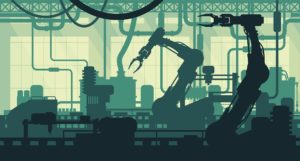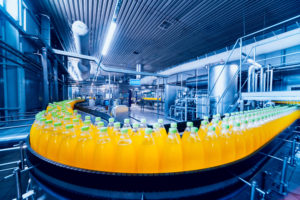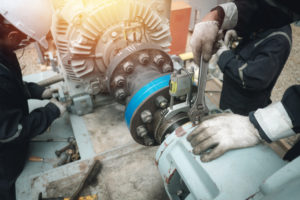
Three Ways AI Is Helping Manufacturers

(d1sk/Shutterstock)
Thanks to the global supply chain and growth of middle-class culture, manufacturers are under tremendous pressure to make high quality goods that customer desire at a price they can afford. One technology that’s increasingly being used to help manufacturers meet these requirements, grow their market share, and boost profitability is artificial intelligence.
As MathWorks’ Industry Manager for Industrial Automation & Machinery, Philipp Wallner has a front-row view into how some of the most advanced manufacturers are adopting technology, including modeling, simulation, digital twins, and AI. The company’s two main offerings, the MATLAB statistical programming environment and SimuLink, which is used for modeling and simulation , are instrumental in meeting these goals.
Based on Wallner’s experience, there are three main ways that manufacturers are putting AI to use in their shops.
1. Predictive Maintenance
Manufacturers typically run continuous operations, so any downtime for maintaining or repairing machinery directly impacts the bottom line. Determining the optimal schedule for performing preventative maintenance is often the first use of AI on the factory floor, Wallner says.
“One of the main challenges in manufacturing is these processes typically are supposed to run 24/7,” Wallner says. “You’re not supposed to shut something down.”
Once historical data from equipment is collected and prepared, it can be loaded into MATLAB to train machine learning algorithms, which are designed to isolate root cause of failures predict time-to-failure and remaining useful life (RUL) of the equipment. If the algorithm senses a potential problem in the data, it can signal to the equipment operator that some maintenance is needed.
MathWorks has experiencing developing predictive maintenance applications across different industries, says Wallner. “A lot of what our customers doing in different areas, whether it’s woodworking, packaging, or bottle filling, it’s very similar so the workflows are pretty similar,” he says. “It’s lot of electric drives for positioning, for movement, sensors for temperature, pressure, torque, etc. and closed-loop control that runs on industrial controllers.”
2. Visual Quality Detection
A more sophisticated use of AI, visual quality detection relies on deep learning systems trained on a large number of images taken from the factory floor. Visual quality detection isn’t new, but it’s been revolutionized thanks to the new deep learning approaches, Wallner says.

Automated visual inspection in manfuacturing often uses deep learning models today (asharkyu/Shutterstock)
“From a manufacturing line where you always produce the same kind of good for a year or 10 years, you can really work on that algorithm and fine tune it and run it,” he says. “Manufacturing really has to be way more flexible, and here AI can help quite a bit with being more flexible in quality inspection.”
The challenge with visual quality detection is that it requires a lot of labeled data. That is typically a manual process, which is time-consuming and expensive. However, MathWorks is developing apps designed to can take some of the labeling burden off of people, Wallner says, although it will never be completely automated.
MathWorks is also exploring synthetic data to help customers train their AI systems with automatically generated images, Wallner says.
“I see quite some potential there, especially among our customer who already have simulation models in place,” he says. “They can relatively easy simulate those in their simulation models and then train the algorithm.”
3. Reinforcement Learning for Robotics
Another area of promise for AI in manufacturing is the use of reinforcement learning to train automated systems, such as pick-and-pack robots at the end of an assembly line. This is a more advanced AI use case, and not for beginners, Wallner says.

Reinforcemetn learning helps automated pick-and-pack machines optimize their routines (Roman-Zaiets/Shutterstock)
“It’s not the lowest hanging fruit if you think in terms of models,” he says. “We see that mainly with handling systems, like robotics or other handling systems, where more and more clients are training these handling systems.”
MathWorks works with some of the biggest bottlers and packagers in the world, and they are eager to automate as much of the work as possible. For these clients, the use of robotics trained with reinforcement learning algorithms has the potential to cut down on manual labor, thereby boosting profits.
“These packages or bottles just come randomly, and then the robot needs to pick that package and find the least time-consuming or the least resource-consuming way to bring it from A to B,” Wallner says. “This is really where we see more and more reinforcement learning used.”
Future AI Use Cases
While AI has the potential to improve product quality and boost profits for manufacturers, it’s not something that company leaders should take lightly, Wallner says. “Getting into AI is not something that you do overnight,” he says. “It’s a new domain or a new expertise for people in the manufacturing industry.”
MathWorks has some of the most advanced manufacturers in the world using its tools for modeling, simulation, machine learning, and AI. But even among this relatively exclusive group of companies, only about 20% to 30% are pushing the limits in terms of what they can do with modeling.
Wallner sees a lot of potential ways for AI to improve manufacturing in the future. “There’s a long list to come, especially when it comes to optimization, optimizing the throughput of a big production plant,” he says. “I think there’s plenty of human expertise and knowledge in there as of today. But training that into an AI, I think that will really increase the business value of AI significantly.”
Related Items:
Improving Manufacturing Quality and Asset Performance with Industrial Internet of Things



























